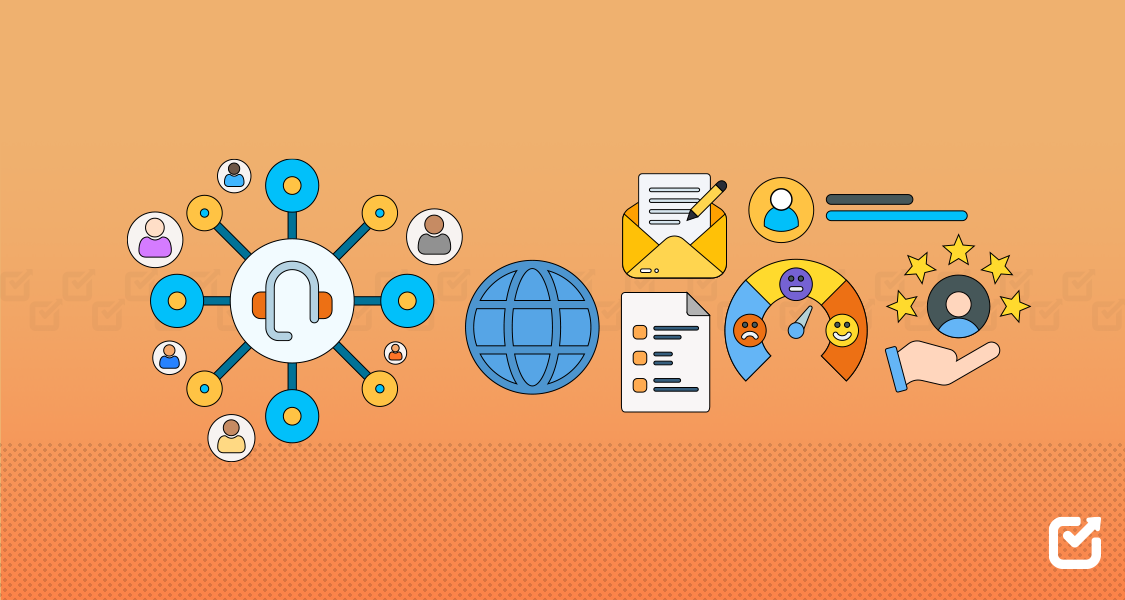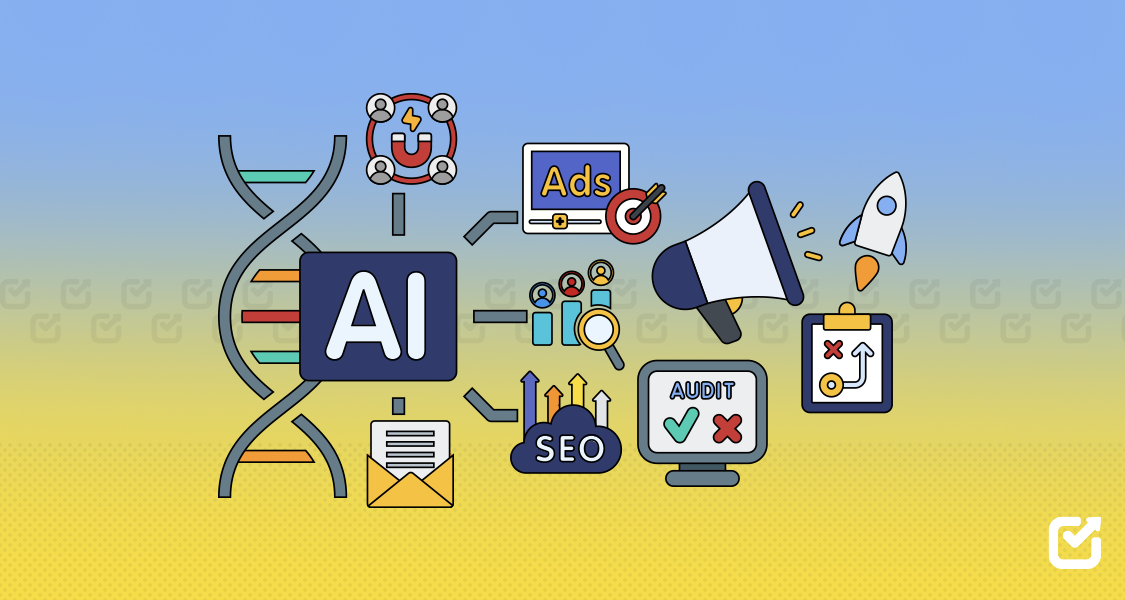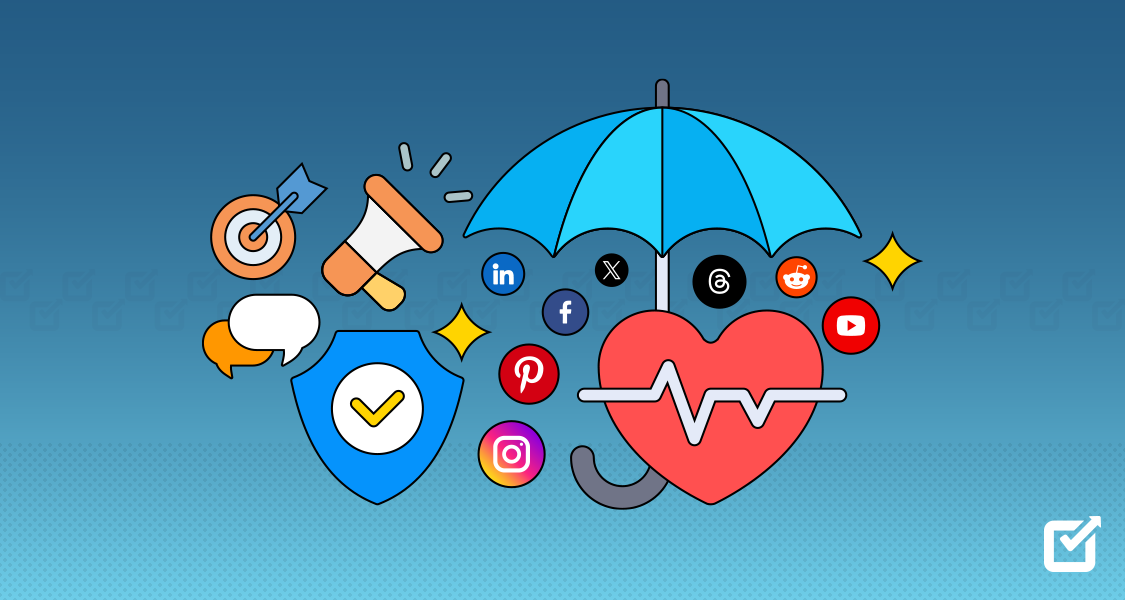You’re shopping online for a new pair of shoes, but before making a purchase, you check reviews on social media, visit the brand’s website, and even drop by the store to try them on.
Sounds familiar?
You’re not alone. In fact, 73% of customers interact with multiple channels while shopping—whether it’s online, in-store, or through customer support.
This shift in consumer behavior is why businesses today need an omnichannel customer experience—a strategy that ensures seamless engagement across all touchpoints.
From social media interactions to website visits and in-store experiences, a well-executed omnichannel approach not only enhances customer satisfaction but also fuels long-term business growth.
In this blog, we’ll explore why an omnichannel strategy is essential, how it improves customer engagement, and the best practices (and tools) to implement it successfully.

Manage All Your Clients in One Place With Ease!
Social Champ lets you handle multiple accounts effortlessly. Switch between clients, track performance, and deliver results—all from a single platform.
Short Summary
- Omnichannel customer experience is a priority for businesses to meet customers’ expectations.
- A consistent experience throughout channels enhances trust, builds loyalty, and increases customer retention.
- Omnichannel customer experience management ensures each touchpoint is unified and offers personalized service.
- Failing to provide an integrated, seamless experience risks losing customers to those doing it correctly.
- Tools like Social Champ help businesses manage many social pages, ensure brand consistency, and save time.
- Automation helps simplify tasks, ranging from scheduling posts to creating personalized messages.
- Omnichannel investment is necessary for future-proofing companies and remaining competitive in the current market.
What Is Omnichannel Customer Experience & Why It Matters for Your Business?
If you’ve ever started shopping on your phone, continued on your laptop, and then completed the purchase in-store—all without a hitch—you’ve experienced the magic of omnichannel customer experience.
But what exactly does it mean, and why should your business care?
Let’s explore.
What Is Omnichannel Customer Experience?
An omnichannel customer experience is all about delivering a seamless and integrated experience for your customers no matter how or where they interact with your brand.
Being on multiple channels isn’t about just being there—it’s about making the channels work together to deliver a consistent and personalized experience.
For Example:
- A shopper sees a product in your Instagram ad, clicks on your website, and adds it to the cart.
- Then, they receive an email reminding them about the product.
- They visit your offline store to try it and redeem a mobile coupon they received via SMS.
- When they purchase, they receive a follow-up email for feedback.
Every step feels connected and smooth—that’s omnichannel customer experience management done right.
Why Does It Matter for Your Business?
Customers don’t just buy products or services—they buy experiences.
And if your business isn’t delivering a smooth, consistent experience across all touchpoints, you’re likely losing customers to competitors who are.
- Customers Expect Consistency: When customers interact with your brand via social media, your website, or in a store, they expect the same service and message. If your channels feel disconnected, it frustrates and confuses them.
- Creates Trust and Loyalty: A seamless customer experience omnichannel strategy makes clients feel seen and appreciated. If each experience is deliberate and personalized, they will be more likely to stay loyal.
- Drives Better Results: By integrating your channels, you can design a more cohesive and effective customer journey. This not only boosts satisfaction but also sales and retention.
Omnichannel Customer Experience Examples
Let’s take a look at a few real-world examples to see how companies are nailing this strategy:
- Starbucks: Their app provides advance ordering, earning rewards, and in-store pickup—all while it is synced to your account. Online or offline, the experience is continuous.

Starbucks’ Landing Page - Disney: From their website to their parks, every experience is connected and magical. Their omnichannel customer experience makes each touchpoint enhance the overall journey.

Disney’s Landing Page
In today’s competitive market, delivering a great omnichannel customer experience is no longer a nice-to-have—it’s a requirement.
With omnichannel customer experience management, you can design a customer journey that’s not just seamless but also unforgettable.
Featured Article: A Guide to 25 AI Marketing Tools for 2025
Why Omnichannel Customer Experience Is the Future of Business Success
How customers interact with brands has significantly evolved over the years.
Those days are gone when a single-channel strategy was sufficient to cater to their demands.
Now, the omnichannel customer experience is the secret to differentiating and creating long-term relationships with your audience.
But why is omnichannel customer experience management crucial for businesses in 2025 and beyond?
Let’s dissect.
The Shift in Customer Expectations
Consumers once were happy to interact with a brand only in one form—either online, over the phone, or in the store.
But, consumers now expect more.
They want to shift seamlessly across channels, either starting to shop on social media, switching to your site, or completing store purchases.
And, they expect these touchpoints to work together to deliver a seamless, customized experience.
As a business, failing to deliver this type of experience means losing customers to your competition who are doing it right.
Customers’ need for a customer experience omnichannel is no longer an option—it’s mandatory.
Omnichannel Customer Experience Management
It’s not just having a presence on different platforms.
It’s having all those platforms interact together in a single cohesive strategy.
That’s where omnichannel customer experience management comes into play.
This approach involves aligning your customer service, marketing, sales, and even store operations to build a consistent brand experience no matter where and how a customer interacts with you.
If done well, omnichannel customer experience management enhances satisfaction and fuels higher loyalty, engagement, and revenue.
Here’s why omnichannel customer experience management matters so much:
- Consistency Across Channels: Ensures your message and branding are consistent, wherever the customer is engaging.
- Personalization: It tailors the experience to the customer to make them feel valued and recognized at each touchpoint.
- More Efficiency: Combines all the systems to eliminate processes and create a smoother customer experience.
Take a scenario, for instance, when the customers are allowed to start shopping on your website, get an email reminder after, and complete their purchase at a physical store after getting a tailored promotion.
It is a smooth experience. Every touchpoint becomes harmonized, so customers feel that they’re heard, understood, and valued and respected.
The Future of Omnichannel Customer Experience
So why is omnichannel customer experience the future of business success?
Because it’s no longer enough to simply meet customer expectations—you have to exceed them.
Customers expect to interact with your brand wherever they happen to be, on any device or platform, and they expect that experience to be continuous and personalized.
For businesses, this means investing in technology and strategies to deliver omnichannel customer experience management.
It is a matter of understanding that customer touchpoints need to be linked, from websites and social media to emails, apps, and visits to the store.
Why Businesses Need to Have an Omnichannel Strategy
- Better Customer Loyalty: The seamless, personalized experience results in return customers.
- Increased Revenue: Customers are likely to purchase when the experience feels integrated.
- Deeper Insights: A combined system provides deeper insights into customer behavior, which means better decision-making.
By providing a connected, simplified, and personalized experience, businesses not only meet customer expectations but also position themselves as industry leaders.
Ultimately, taking an omnichannel approach isn’t about keeping up with the times—it’s about future-proofing your business for sustained success.
Featured Article: TikTok Ideas: Boost Engagement and Creativity in 2025
The 5 Pillars of a Winning Omnichannel Customer Experience Strategy
An omnichannel customer experience strategy is no longer just a nice-to-have—it’s essential for driving growth and loyalty in the competitive market.
Crafting a winning strategy requires careful planning and execution, built on a strong foundation of key principles.
Here’re the five pillars of an omnichannel customer experience strategy that can help businesses create seamless, personalized journeys across multiple channels.
-
Consistency Across All Channels
Consistency is the basis of a successful customer experience omnichannel strategy.
No matter which channel customers choose to engage with your brand—social media, email, or store—their experience should be consistent.
Inconsistent branding and messaging can confuse customers and damage brand reputation.
To accomplish this consistency, ensure that:
- Your style, tone, and visual identity remain the same across all touch points.
- Information presented must be accurate and current, for instance, product stock levels, price, and promotions.
A consistent experience helps build trust and make customers feel more comfortable when dealing with your brand, resulting in higher overall customer satisfaction and loyalty.
-
Efficiency Through Automation
Automation is among the most powerful pillars of an omnichannel customer experience strategy.
With increasing customer demands, businesses must react quickly, consistently, and in high numbers.
Automation tools can help do this by streamlining processes across different channels, from customer support to marketing.
Automation allows businesses to:
- Send Timely Targeted Messages: Automatically send follow-ups, reminders, and offers triggered by customer action, boosting engagement and conversion.
- Manage Accounts Without Hassle: Tools like Social Champ enable businesses to schedule social updates, track engagement, and manage messages across multiple platforms from a single dashboard.
- Provide 24/7 Customer Support: Automated response systems and chatbots ensure customers get real-time support irrespective of when or where they approach you.
By incorporating automation within your omnichannel customer experience strategy, you get back time, are more efficient, and ensure consistency in the experience.
This way, you can focus on high-value activities requiring a human touch.
-
Data-Driven Decision Making
Today, data takes center stage in shaping an effective omnichannel customer experience.
Businesses need to leverage customer data to make decisions that drive engagement, personalization, and experience.
By tracking customer behavior, interests, and activity across channels, you can craft focused initiatives that meet their requirements at every journey stage.
Some of the key benefits of data-driven decision-making include:
- Personalization: Divide your audience into segments based on data and tailor content and offers based on individual interests.
- Improved Campaigns: Track the performance of your marketing efforts to optimize content and engagement strategies in real-time.
- Predictive Insights: Recognize behavioral patterns of customers to anticipate future needs and deliver proactive solutions.
Pro Tip: Social media platforms like Social Champ provide valuable analytics allowing businesses to monitor social media engagement across social media channels and fine-tune the strategy with real-time feedback.
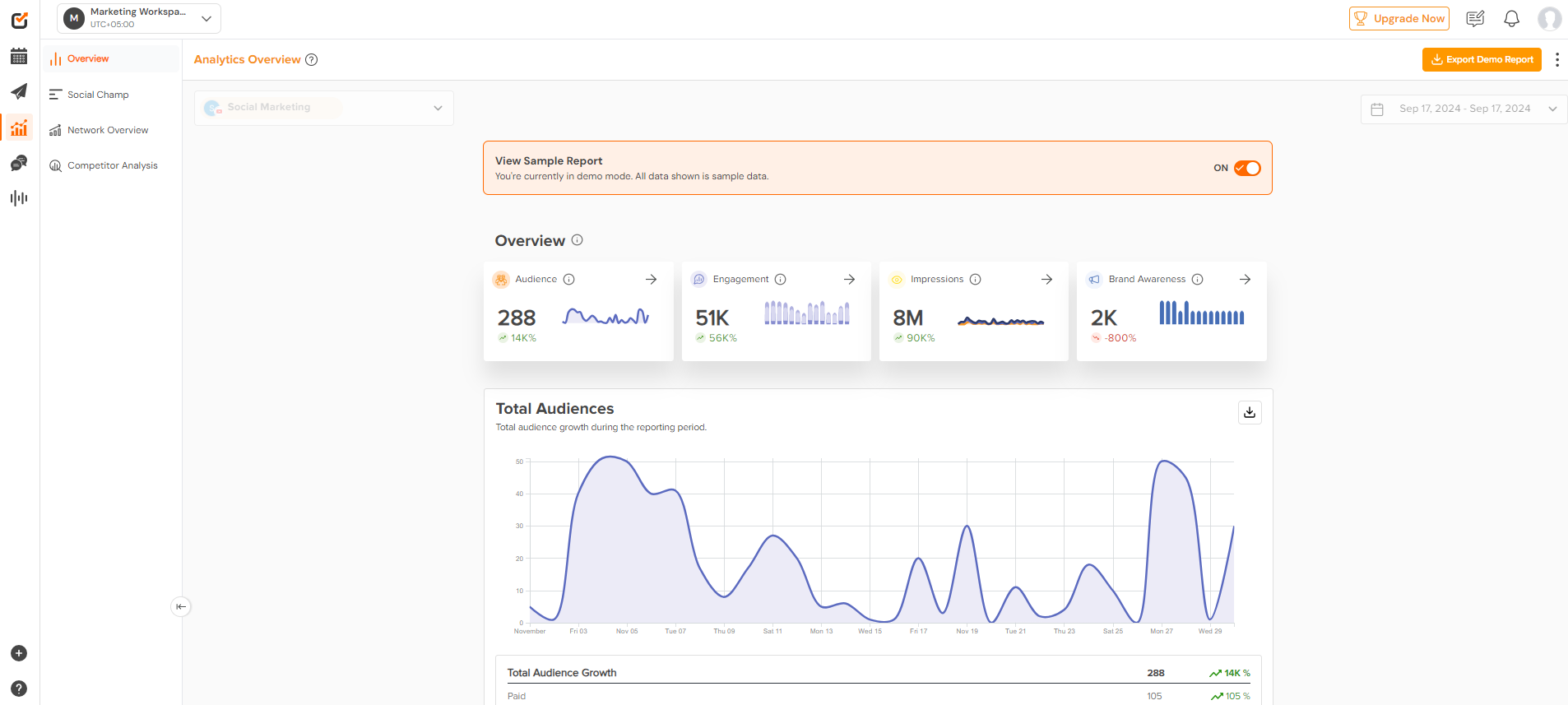
Social Champ’s Analytics -
Personalization at Scale
Personalization goes beyond calling customers by their first name.
It shows them a unique experience that addresses their needs, interests, and past interactions with your brand.
It is essential in an omnichannel customer experience where customers expect customized content no matter where they engage with your business.
To achieve personalization at scale, focus on:
- Segmenting Your Audience: Use data to divide customers into segments by interests, behaviors, or demographics.
- Delivering Relevant Content: Create personalized messages, offers, and recommendations based on previous interactions.
- Cross-Channel Synchronization: Offer personalization that flows effortlessly across every touchpoint. For example, customers who browsed a product on your website should see similar recommendations in their email or social media feed.
If you provide a personalized experience, the clients feel special and more likely to return.
-
Seamless Technology Integration
A successful omnichannel customer experience model relies on combining several technologies.
From social media automation tools to CRM, all the technology must work together to provide a unified experience to customers.
Social Champ helps in omnichannel customer experience by:
- Automating Social Media Posts: Schedule posts on various channels to maintain consistent messaging without spending time posting on each channel individually.
- Measuring Performance: Monitor social media platform engagement metrics and adjust accordingly.
- Live Responding: Act on customers through channels effectively and in real time so that no customer query falls on deaf ears.
Having these tools integrated within your omnichannel customer experience strategy allows you to manage your operations effectively as you focus on offering a top-notch experience to your customers.

Need to Improve Customer Engagement Across Channels?
Social Champ enables you to schedule, monitor, and analyze your social media activities, ensuring your audience’s seamless and personalized experience.
Mastering Seamless Customer Journeys Across Every Channel
Customers expect a seamless omnichannel customer experience that moves effortlessly across different touchpoints.
Whether they interact with your brand on social media, your website, or your stores, a consistent experience is most important in building trust and loyalty.
Social Champ is crucial in helping businesses excel at customer experience omnichannel by ensuring brand consistency on social media.
How Social Champ Ensures Brand Consistency
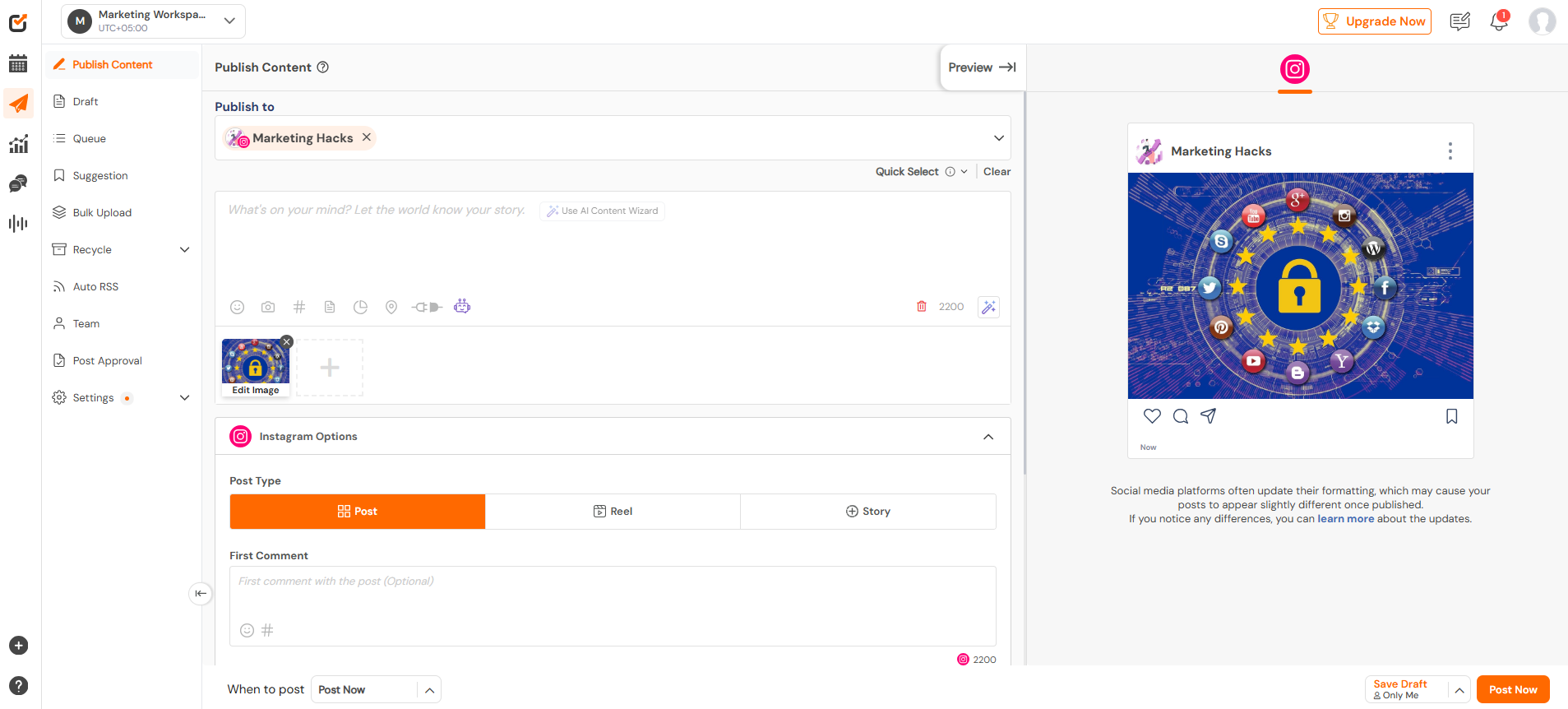
It may be tough to maintain uniform brand presence over numerous social media platforms when you have created plenty of profiles across different campaigns.
Social Champ streamlines this process by providing a centralized platform to handle all your social media needs, ensuring your message remains uniform.
Here’s how Social Champ helps you maintain brand consistency across channels:
- Unified Dashboard: Manage multiple social media accounts in one place, and ensure that your messaging is consistent across channels.
- Scheduled Posts: Plan and schedule posts in advance, so your brand voice is consistent even when you’re not around.
- Customizable Content: Tailor content to the specific requirements of each social channel yet maintain a consistent tone, style, and messaging that resonates with your brand.
- Cross-Platform Analytics: Track engagement and performance on channels to ensure your brand message resonates with your customers and adjust accordingly.
Benefits of an Omnichannel Customer Experience That Is Unified
With the help of tools like Social Champ to ensure consistent branding, businesses can ensure a seamless customer experience that spans all interactions.
Some benefits are:
- Builds Trust: Continuous messaging gives a stronger connection to customers, who become more confident in your brand.
- Improves Customer Retention: A seamless, integrated experience across social media sites enhances customer satisfaction, improving loyalty.
- Increases Engagement: A unified approach helps the customer engage with your brand, increasing engagement.

Ready to Deliver a Seamless Omnichannel Customer Experience?
Streamline your content scheduling, track performance, and ensure consistent branding across every channel–all with Social Champ!
The Future of Omnichannel – Are You Ready?
In the digital world, offering a seamless omnichannel customer experience is not an option—it’s a necessity.
Customers expect consistency across all touchpoints, whether they’re engaging with your brand on social media, on your website, or in store.
With omnichannel customer experience management, businesses can have a consistent, personalized experience in line with customer expectations at every step.
Social media management tools like Social Champ help to automate social media management, posting schedules, and performance monitoring from one interface, ensuring brand consistency.
By adopting a customer experience omnichannel strategy, businesses can fuel sales, enhance customer satisfaction, and increase engagement.
The future of business is owning the omnichannel experience.
